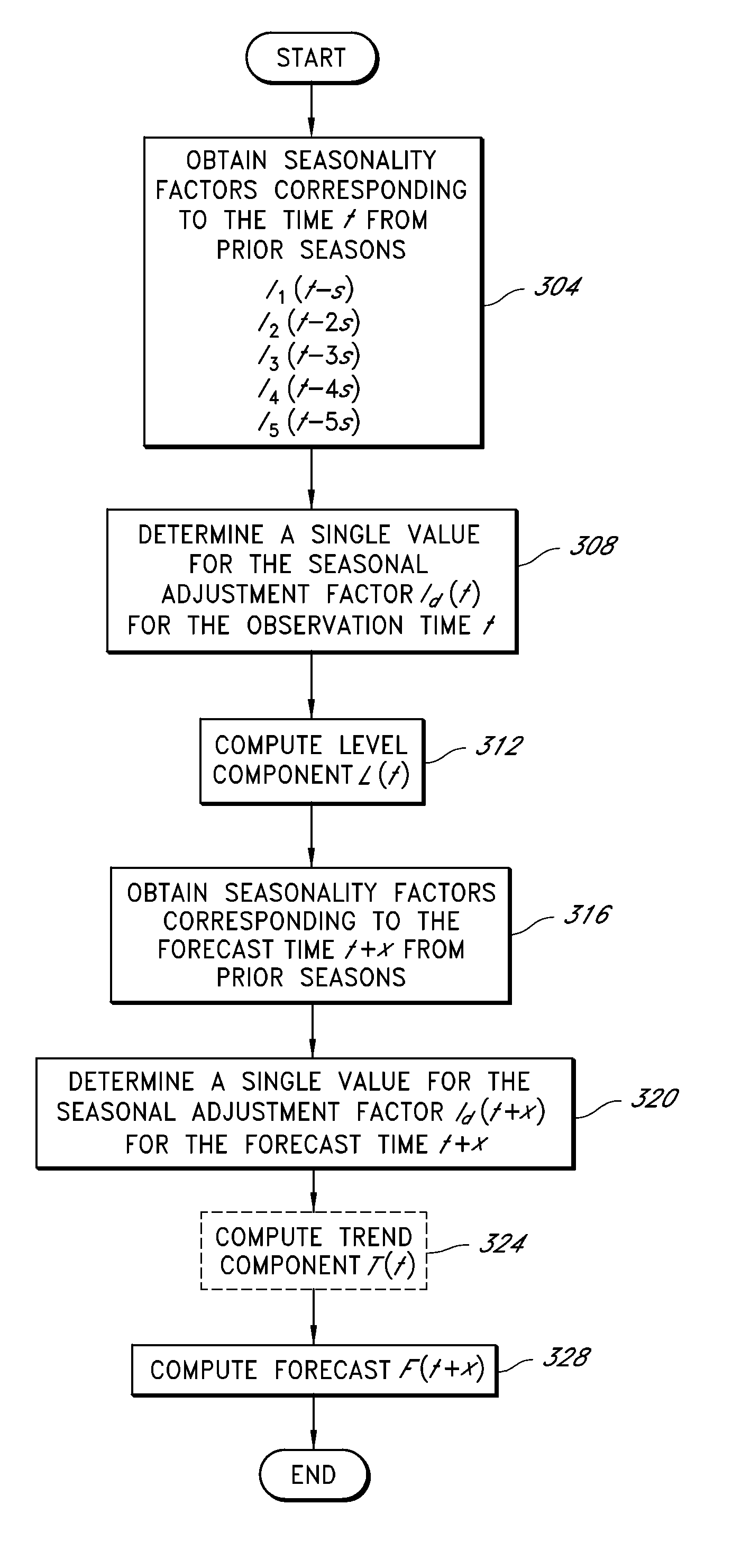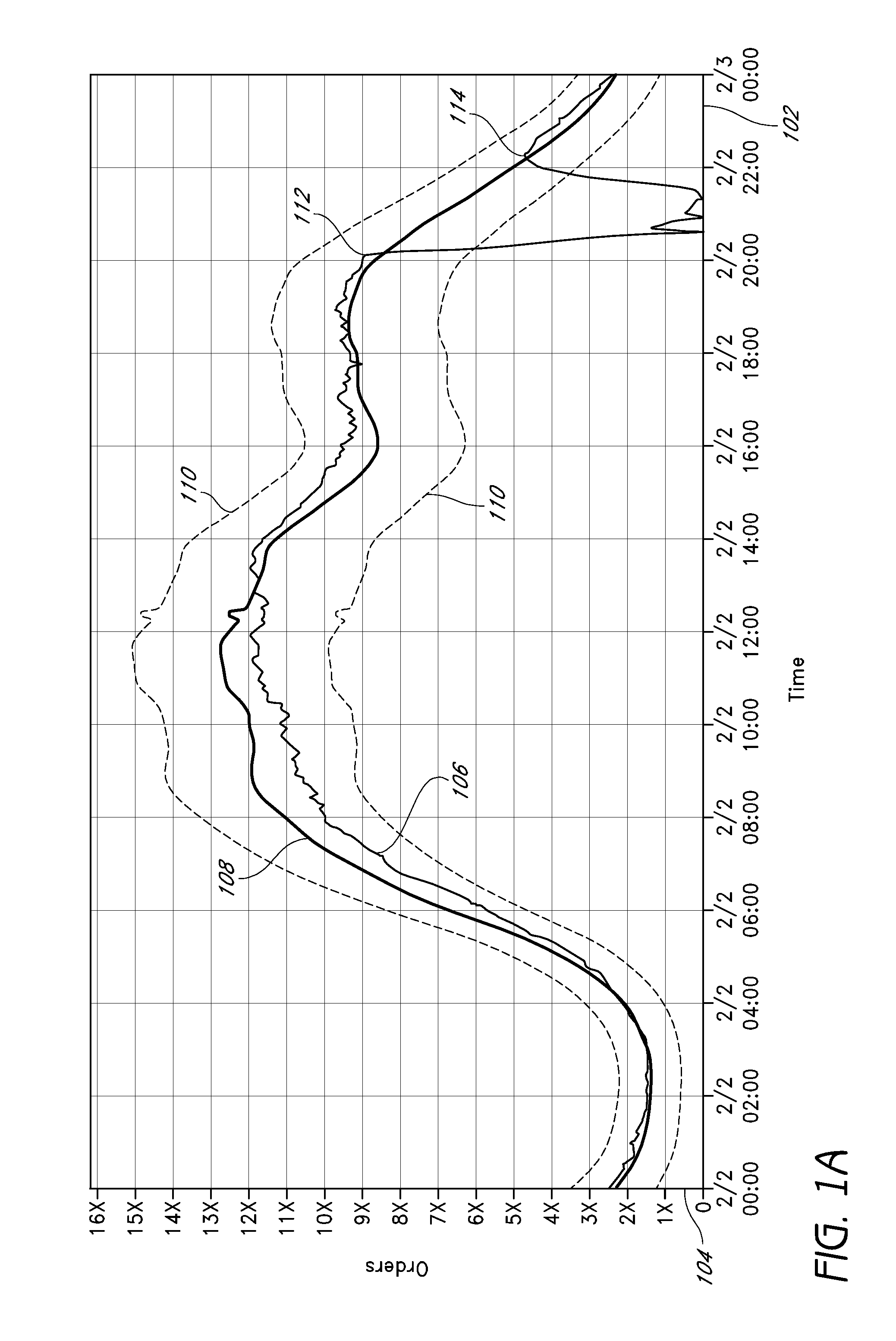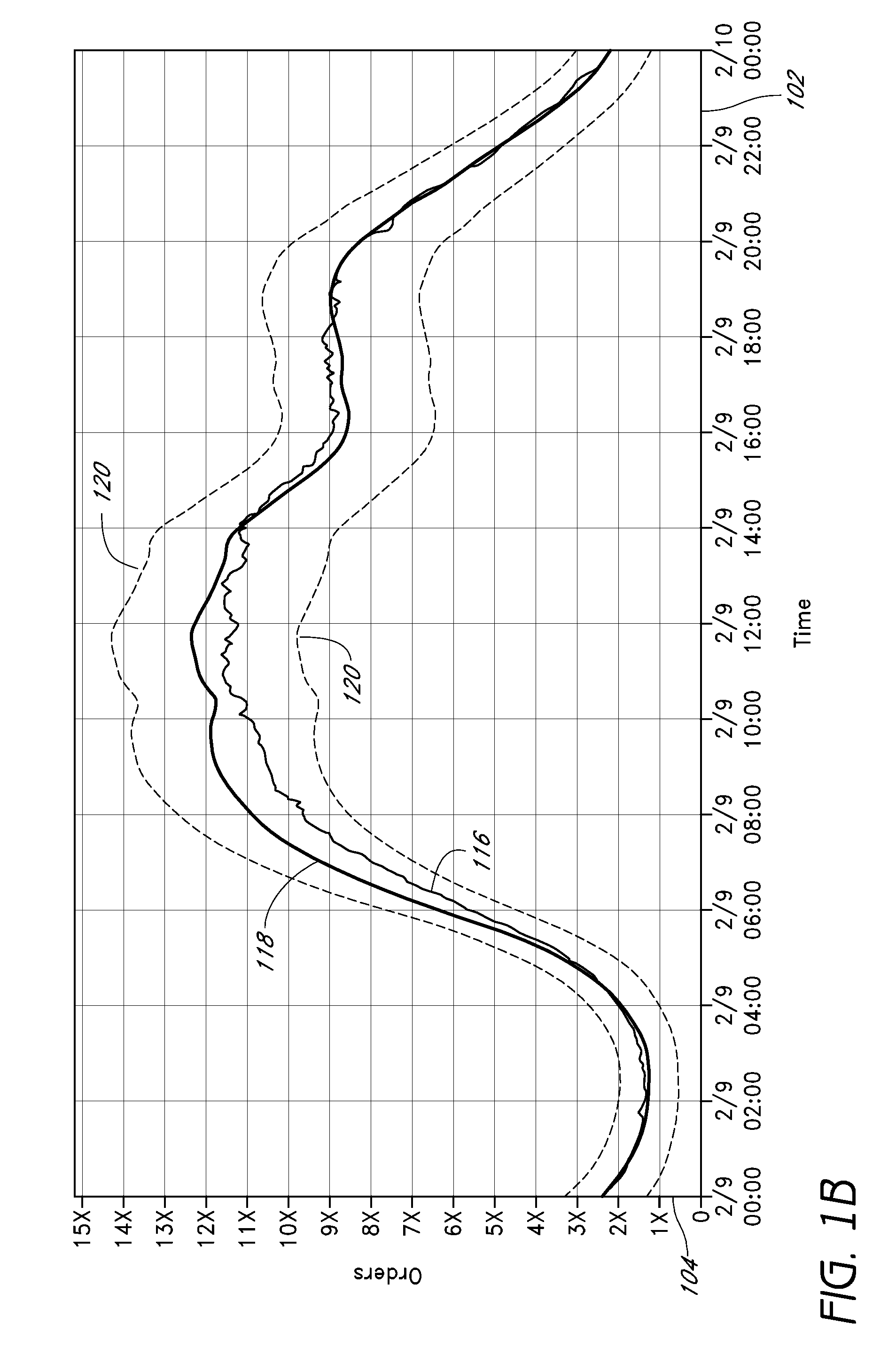Robust forecasting techniques with reduced sensitivity to anomalous data
a forecasting technique and anomalous data technology, applied in forecasting, instruments, data processing applications, etc., can solve the problems of large complexity of time series forecasting algorithms, ineffective handling of anomalous data points, and relatively large number of consecutive data points corresponding to anomalous data
- Summary
- Abstract
- Description
- Claims
- Application Information
AI Technical Summary
Benefits of technology
Problems solved by technology
Method used
Image
Examples
example timing
Diagrams (FIGS. 1C, 1D, and 1E)
[0052]FIG. 1C is a timing diagram illustrating seasonal periods used to account for seasonality (deseasonalize) a current observation at time t and to adjust for seasonality (seasonalize) a forecast for a time t+x, where the forecast time horizon x is less than or equal to a seasonal period s. An example described later in connection with FIG. 1D illustrates seasonal periods where the forecast time horizon x is greater than the length of a seasonal period s. The illustrated timing diagrams may be helpful in illustrating features of a process that will be described in greater detail later in connection with FIG. 3.
[0053]A horizontal axis indicates time, with time increasing to the right. A dashed vertical line at present time t (now) corresponds to the most recent in time observation in use by the forecasting process. As illustrated in FIG. 1C, the dashed vertical line at present time t demarcates a domain to the left in which observations are available...
PUM
 Login to View More
Login to View More Abstract
Description
Claims
Application Information
 Login to View More
Login to View More - R&D
- Intellectual Property
- Life Sciences
- Materials
- Tech Scout
- Unparalleled Data Quality
- Higher Quality Content
- 60% Fewer Hallucinations
Browse by: Latest US Patents, China's latest patents, Technical Efficacy Thesaurus, Application Domain, Technology Topic, Popular Technical Reports.
© 2025 PatSnap. All rights reserved.Legal|Privacy policy|Modern Slavery Act Transparency Statement|Sitemap|About US| Contact US: help@patsnap.com



